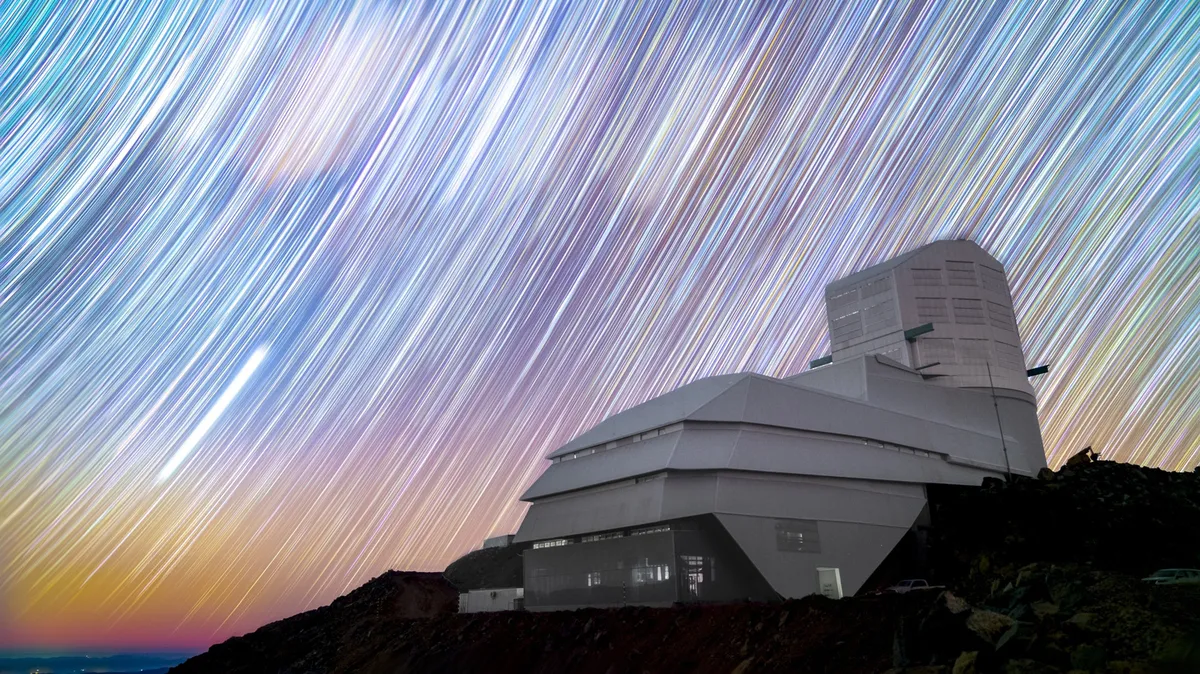
Every year, telescopes on Earth and in space collectively discover around 20,000 new asteroids. However, in just its first ten hours of operation, the NSF–DOE Vera C. Rubin Observatory achieved something remarkable—it identified 2,104 asteroids. This astounding feat represents 10% of the total annual discovery rate accomplished by the entire astronomical community, all within less than half a day. The Rubin Observatory, funded by the U.S. National Science Foundation and the U.S. Department of Energy's Office of Science, is pioneering the way in astronomical research.
In development since the 1990s, the Rubin Observatory is a collaborative effort between the Stanford Linear Accelerator Center (SLAC) and NSF NOIRLab. Located in the remote mountains of Chile, away from pervasive light pollution, it is home to the Simonyi Survey Telescope. This advanced telescope features three mirrors, with two mirrors ingeniously combined on a single substrate, creating an impressive width of 8.4 meters. This design maximizes the collection of cosmic light, which is directed to the telescope's camera that boasts three lenses, the largest measuring a remarkable 1.6 meters in width.
The camera at the Rubin Observatory is the largest digital camera ever constructed, comparable in size to a car and weighing a hefty 6,000 pounds. For perspective, while an iPhone Pro has a 48-megapixel camera, the Rubin camera features an astonishing 3,200 megapixels. With its ten-year mission, known as the Legacy Survey of Space and Time (LSST), the observatory aims to collect an unprecedented amount of data about the universe.
Throughout its mission, the Rubin Observatory is expected to gather approximately 20 terabytes of data per night, culminating in an extraordinary total of around 500 petabytes over the course of its operation. This amount of data surpasses what humanity has ever recorded in any language, throughout history. By the end of its first year, the observatory hopes to have collected more data than all other optical observatories combined.
So, what will the Rubin Observatory do with its groundbreaking camera? The LSST plans to capture 1,000 images of the Southern sky each night, mapping the entirety of the sky approximately every three to four days. This ambitious undertaking will result in the most detailed time-lapse night photography ever attempted, providing scientists with unprecedented insights into the cosmos.
Historically, humanity has identified around one million asteroids and comets, a task that required the efforts of astronomers using telescopes worldwide. By the conclusion of its ten-year LSST mission, the Rubin Observatory aims to discover an additional four million asteroids. However, its objectives extend far beyond simply cataloging space rocks. One of its primary goals is to delve into the enigmatic nature of dark matter and dark energy, phenomena that constitute over 95% of the universe yet remain elusive to detection.
The existence of dark energy, for instance, is inferred from the observation that galaxies appear to be accelerating away from each other, a phenomenon that lacks explanation without considering dark energy. By capturing detailed time-lapse images of every visible galaxy over a decade, the Rubin Observatory hopes to shed light on these cosmic mysteries. Additionally, scientists are eager to see what unexpected discoveries might arise as the observatory explores the depths of space.
Beyond simply releasing images to the public, the team at the Rubin Observatory has developed innovative ways for individuals to engage with its findings. The Skyviewer app allows users to embark on a guided tour of the cosmos through Rubin's images or navigate freely, akin to being the captain of their own starship. For those interested in a multi-sensory experience, the Skyviewer app also enables users to listen to the music of the spheres, enhancing their exploration of the universe.
As Harriet Kung, the acting director of the DOE's Office of Science, aptly stated, the NSF-DOE Rubin Observatory exemplifies what is possible when the federal government supports world-class engineers and scientists with the necessary tools. This revolutionary observatory promises to advance our understanding of the universe significantly, paving the way for future discoveries while inspiring a new generation of astronomers.